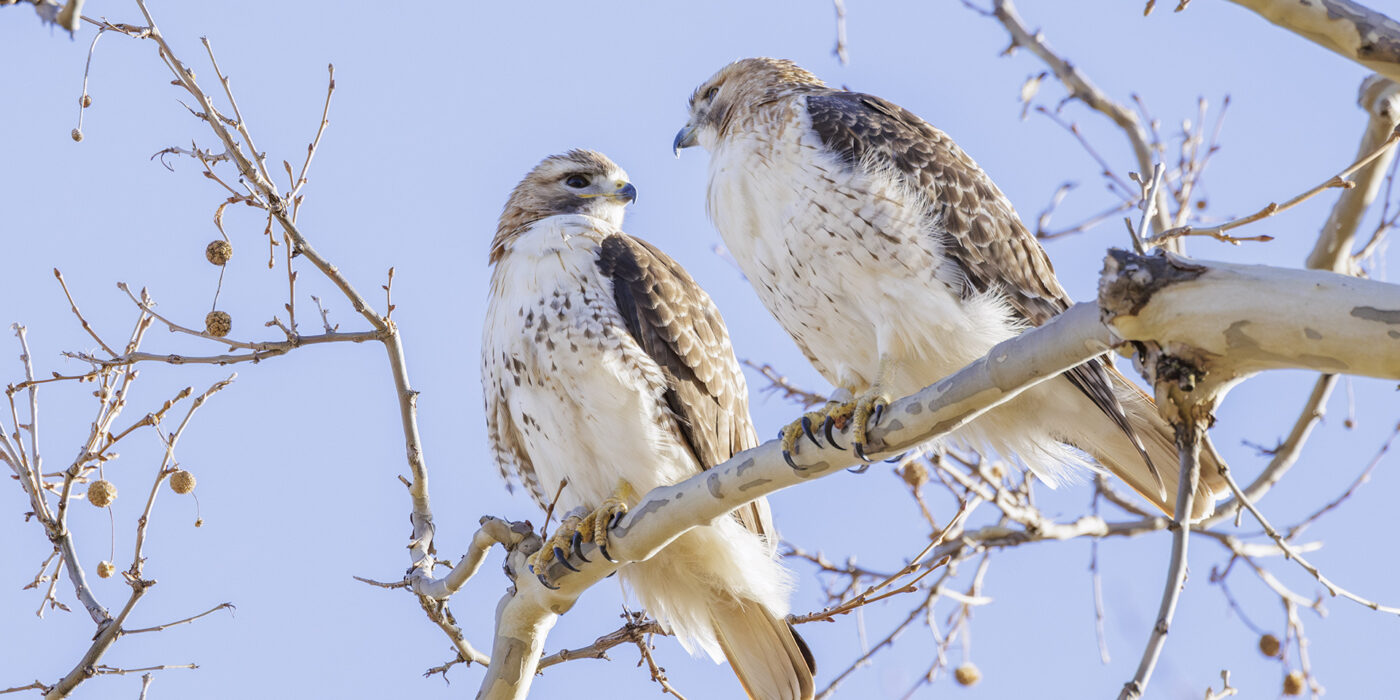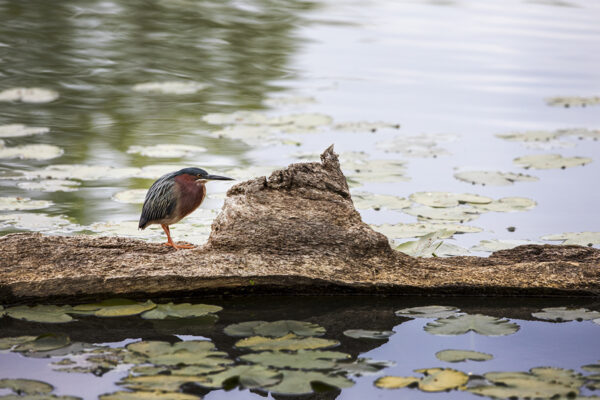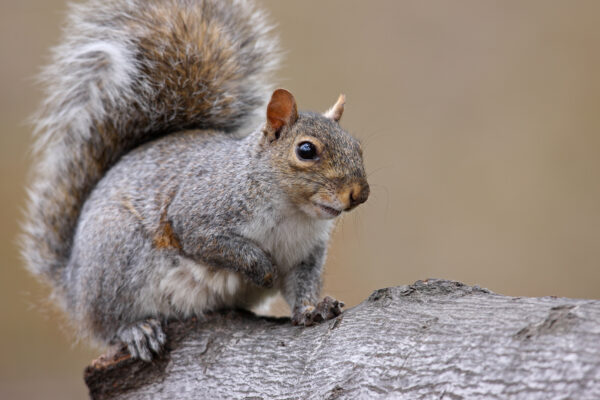Red-tailed hawks are often seen soaring over Forest Park or sitting on the branches of large trees, looking for prey like squirrels, rabbits and starlings. Two hawks that also frequent the Danforth Campus of Washington University in St. Louis have built and are now tending a nest nearby, according to researchers with the Forest Park Living Lab. The project team has been following the hawk pair since December.
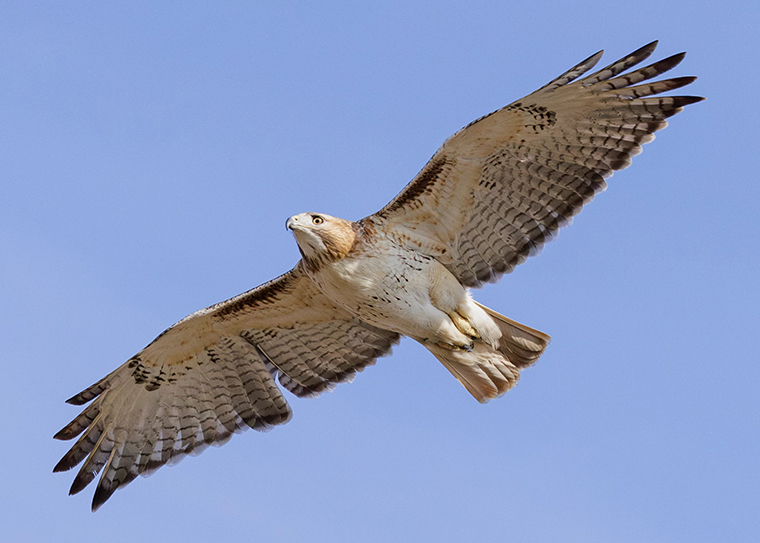
“GPS data showed that the hawks were repeatedly visiting the same patch in the park, and when we visited the site in person, we were able to watch the hawks break off sticks from nearby trees and carry them to the nest,” said Stella Uiterwaal, a postdoctoral fellow with the Living Earth Collaborative at Washington University and a senior scientist with the Forest Park Living Lab.
Researchers gave the female hawk a name that is a playful take on her species’ Latin name, Buteo jamaicensis.
“Beauty-O is now spending most of her time in the nest, so we think they have eggs!” Uiterwaal said. “Tungsten, the male, spends less time at the nest than the female. He continues to visit the WashU campus and the northeast corner of Forest Park.”
Forest Park is home to several red-tailed hawks. Researchers are conducting bird surveys to understand where and when birds like these hawks can be found in the park. They have put GPS tags on a total of six red-tailed hawks in Forest Park, which, at 1,300 acres, is one of the largest urban parks in the U.S.
The project team shares movement data about Beauty-O, Tungsten and the other hawks on a free mobile app called Animal Tracker. The app also displays time-delayed movement data from the other animals that they are following in Forest Park, including box turtles, Canada geese, great horned owls, raccoons, coyotes and more.
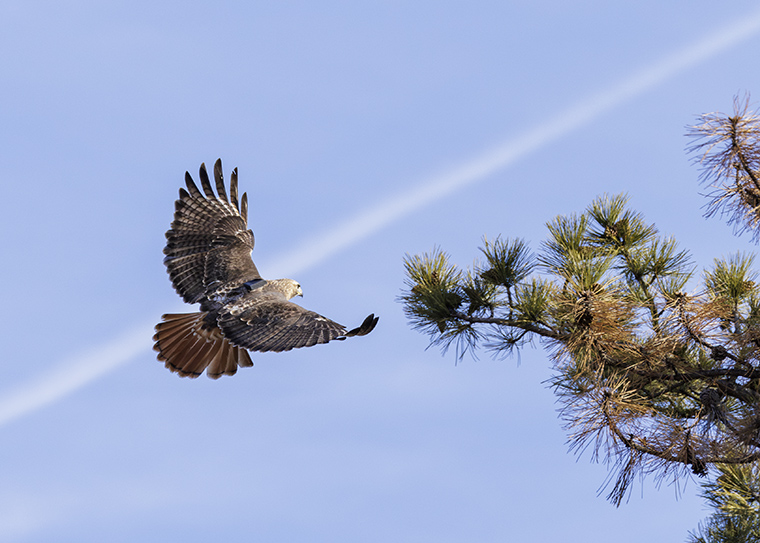
The Forest Park Living Lab team aims to build a movement dataset of more than 200 individual animals, covering all trophic scales and habitats in the park. So far they are following about 30 animals in Forest Park. Through this work, the project is providing a unique map of health and movement that can guide conservation steps.
Forest Park Living Lab is a partnership of Forest Park Forever, The National Great Rivers Research and Education Center, Saint Louis University, the Saint Louis Zoo, Washington University in St. Louis and the World Bird Sanctuary.
Frequent campus visitors
Even before researchers put GPS transmitters on Beauty-O and Tungsten, WashU students and faculty were delighted by red-tailed hawks visiting campus.
There is no way to know for sure if Beauty-O and Tungsten are the same hawks that graced the skies above WashU’s 2023 Commencement celebration or that dropped in on various other campus photo shoots.
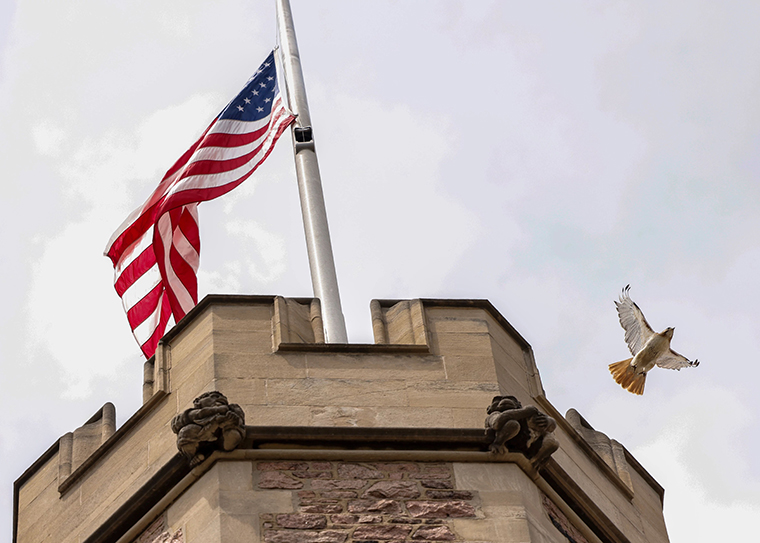
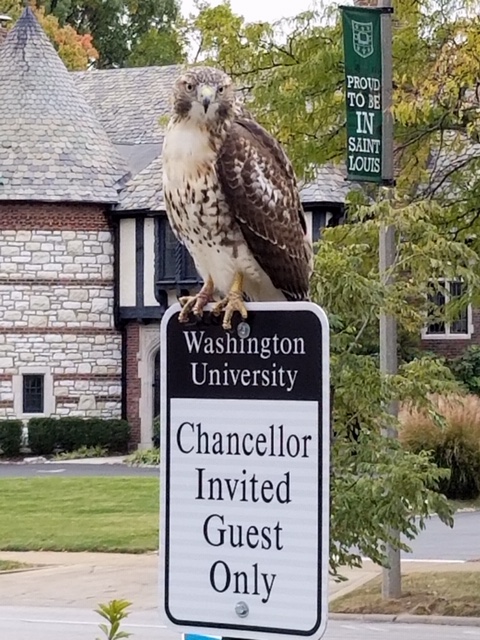
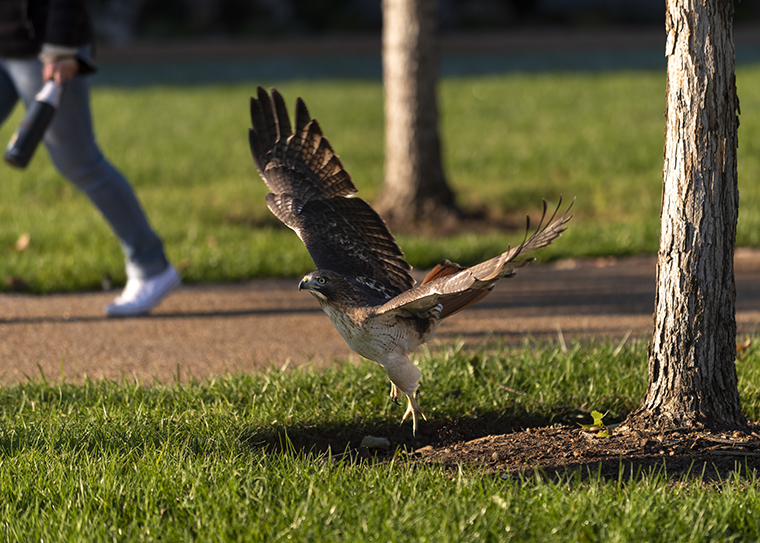
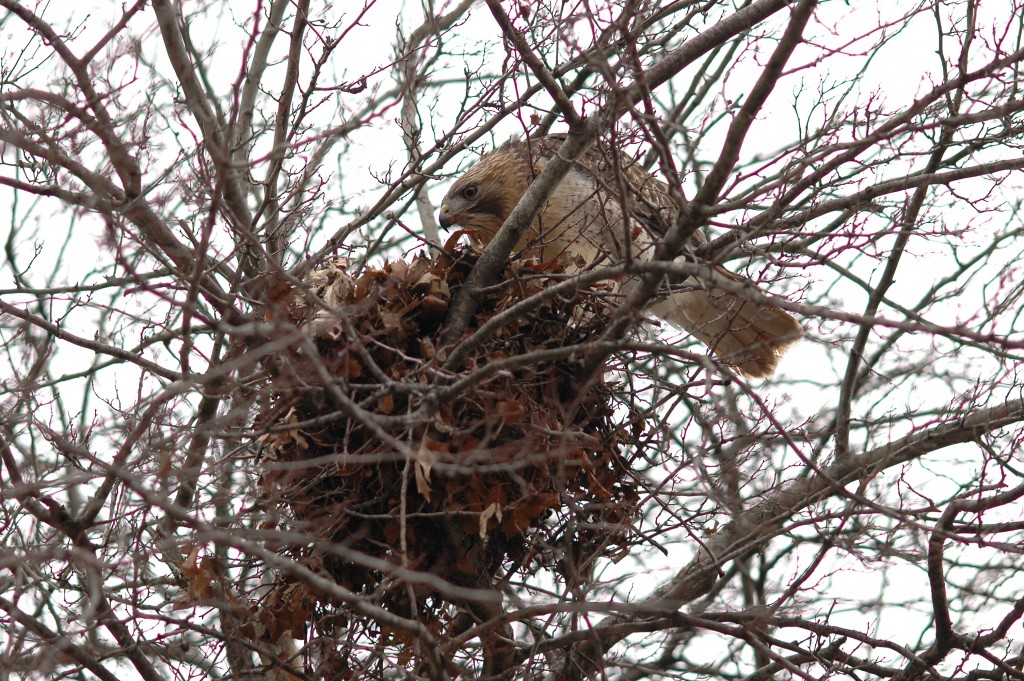
What researchers do know is that red-tailed hawks defend a territory that can be anywhere from half a square mile to 2 square miles. Adults generally do not tolerate the presence of another hawk in their territory, unless it is their mate.
Within their territory, Beauty-O and Tungsten have built a well-hidden nest that is difficult to see because it is at the top of an evergreen tree. “It looks like a safe and secure spot,” Uiterwaal said.
Although red-tailed hawks are common, they do face threats, she said. These include lead poisoning from eating carrion hunted with lead shot, rodenticide poisoning, collisions with vehicles and electrocution on power lines. Red-tailed hawks, along with all other native birds, are protected by federal and state laws.
If researchers’ estimates are correct, Beauty-O and Tungsten’s eggs could hatch sometime this month.
The male hawk will then begin making more out-and-back trips to catch prey and bring it back for the babies. The nest is in a central location with several options for foraging, including residential neighborhoods, the park and the WashU campus.
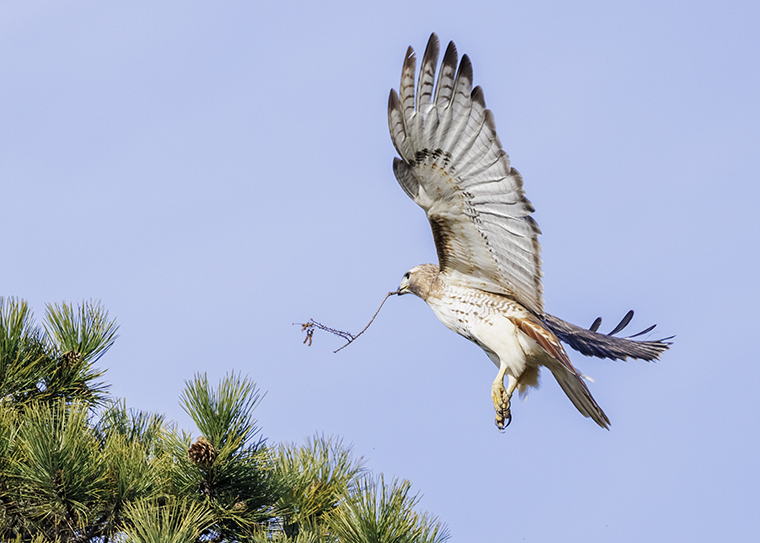
“To get to watch them is a really cool thing,” said Kira Klebe, rehabilitation director at the World Bird Sanctuary, one of the Forest Park Living Lab partners that has been intimately involved with the raptors. Turns out that Tungsten, the male hawk, has some history with the World Bird Sanctuary: in June 2023, he was admitted to the World Bird Sanctuary’s hospital with spinal trauma, and he was successfully treated and released. Now, he may soon be a dad.
“This is a really fun opportunity to get to engage with the wildlife and to get to observe and enjoy them without causing much disruption,” Klebe said. “They’ve already chosen to nest near campus and they’re used to the daily campus activities. As long as we’re not going up to the nest tree and doing something obnoxious, they’re already used to what humans in the area are doing.”
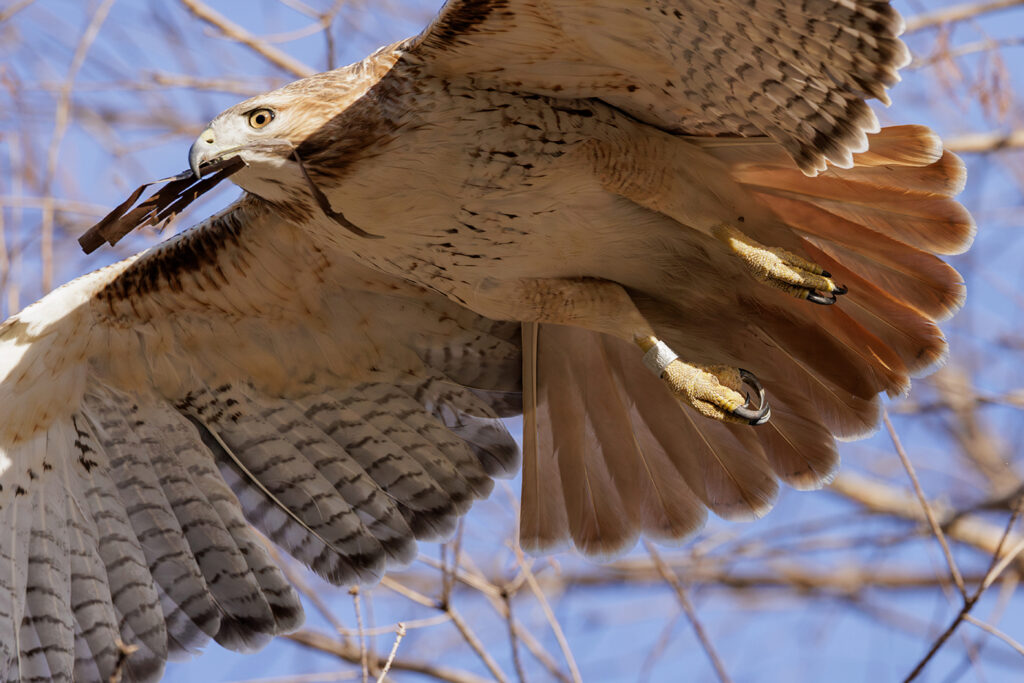
Uiterwaal and Klebe both expressed delight with being able to watch the birds and track their movement data during this critical breeding period.
“Red-tailed hawks are typically monogamous, and they will mate for life,” Klebe said. “They are likely to return to the same nest site, year after year.”
“One thing I love about animal movement data is that it highlights how interconnected we are with wildlife,” Uiterwaal said. “Thousands of cars and people pass by Beauty-O and Tungsten’s nest every day, with most never noticing the hawks. GPS data reminds us to keep an eye out because incredible wildlife is often hidden in plain sight.”
